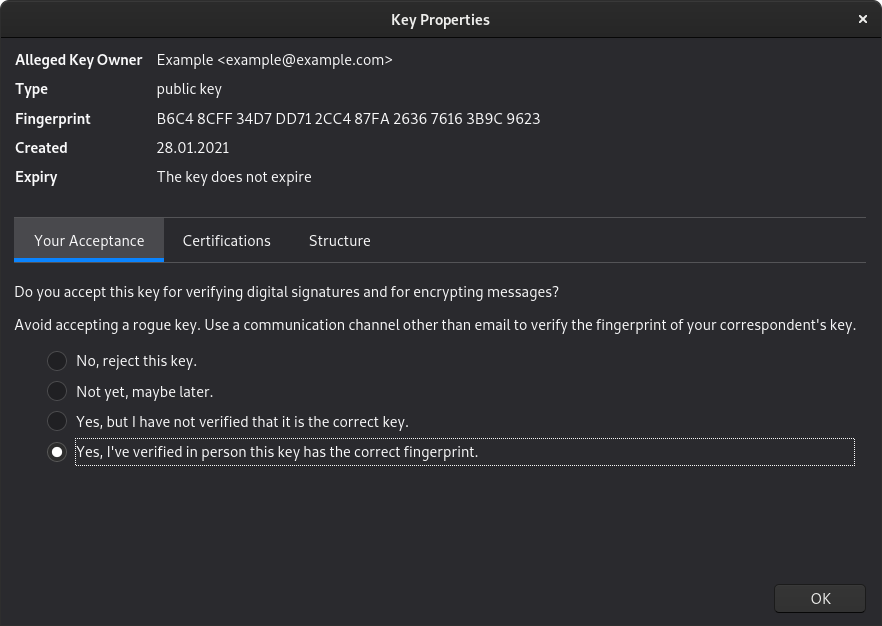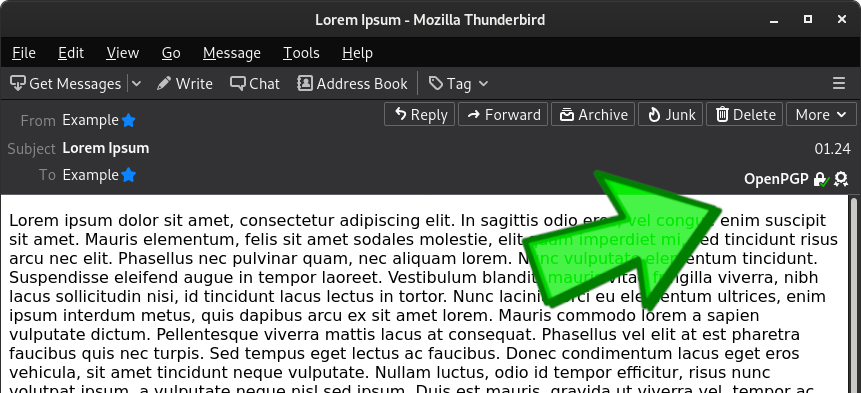This guide helps you import a GNU Privacy Guard (GPG) public key from a sender into your email client for verifying and decrypting email.
You should have received a GNU Privacy Guard (GPG) public key from the sender in GPGs default binary file format, such as example.gpg, or in a armored text format, such as example.pub, for cross platform compatibility. You might have downloaded it from senders website or you might have received in another way.
Thunderbird Mail.
If you will be using Thunderbird Mail, then you will open the Tools drop down menu and select OpenPGP Key Manager. If you have your own key, you should see it in the list of keys, that is already loaded. Open the drop down menu File and select Import Public Key(s) From File. Find the key file and open it. A window will ask you to confirm the key. If this is in fact the correct key for the sender, then click OK. You will now se a window, that confirms, that the key has been loaded. You can see its bit length, its date of creation and its unique fingerprint. Click OK.
You have now imported the key and it should be visible in the list of loaded keys. Open the imported key by double clicking it. Select Yes, I’ve verified in person this key has the correct fingerprint.

You can now verify signatures from this sender and encrypt your messages to this sender using the imported public key.

If you look in the upper right corner, you can see, that a lock indicates, that this message was encrypted, and, that a diploma indicates, that this message was signed by the sender.
Would you like your own key?
If you would like to know, how you can create your own key, read my post about that in How to sign and encrypt email for free with The GNU Privacy Guard (GPG).
